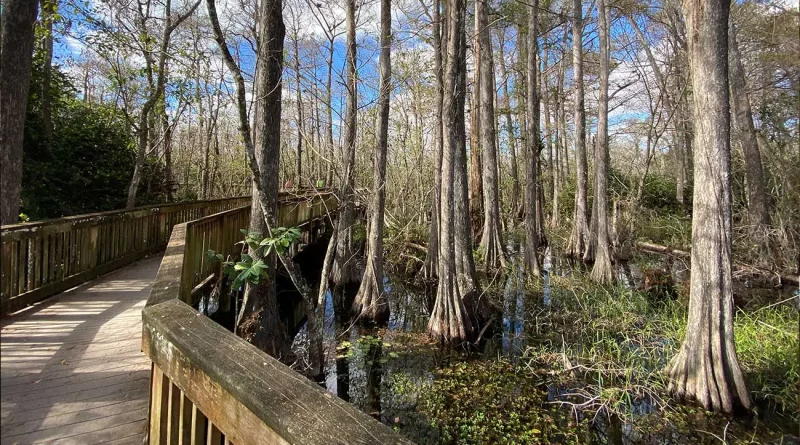Florida Tourist Attractions – Big Cypress National Preserve, The Everglades
While preexisting development is allowed to proceed, with limits, in this 1139-sq-mile preserve, its federal protections generally keep it feeling just about as wild and natural as the Everglades park. And that’s a good thing since the rains that flood its wetlands are integral to the ecosystem that keeps the Everglades green and lush and vibrant.
Recently, the park entered into an interesting ‘Sister Park Understanding’ with a similar park in Guatemala, Laguna del Tigre National Park. The two parks share closely related habitats and management issues, and will now be able to share technical assistance and resource expertise.
About 45% of the cypress swamp (which is not a swamp at all but a group of mangrove islands, hardwood hammocks, and islands of slash pine, prairie, and marshes) is a protected preserve. Great bald cypress trees are nearly gone from the area, as lumbering and other industries took their toll before the preserve was established. These days, dwarf pond cypress trees fill the area.
Why is it called Big Cypress then? Because of the size of the preserve, not the cypress trees within it. Resident fauna include alligators, snakes, wading birds (white ibis’, wood storks, tri-color herons, and egrets), Florida panthers (rarely seen), wild turkeys, and red-cockaded woodpeckers. Find more information at the Big Cypress Visitor Center (941-695-4111; 8:30 am-4:40 pm), about 20 miles west of Shark Valley, or the National Preserve Headquarters (941-695-2000; 8 am-4:30 pm Mon-Fri), just east of Ochopee.
You’ll find 31 miles of the Florida National Scenic Trail, maintained by the Florida Trail Association, within Big Cypress National Preserve. From the southern terminus, which can be accessed by car via Loop Rd, the trail runs 8.3 miles north to the Tamiami Trail, passing the Big Cypress Visitor Center. There are two quite primitive campsites with water wells along the trail. Off-road vehicles are permitted to cross, but not to operate on, the FNST. For the less adventurous, there’s the short Tree Snail Hammock Nature, Trail, off Loop Rd.
On-road vehicles can drive on Loop Rd, a potholed dirt road, and Turner River Rd, which shoots straight north off the Tamiami Trail. There are wildlife-viewing opportunities along the entire stretch of Turner River Rd, especially in the Turner River Canal, which runs along the east side of it. The road leads to the northern area of the preserve where off-road vehicles are permitted.
Source by Kenneth Ng




